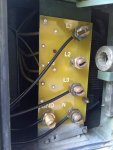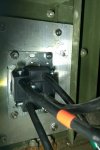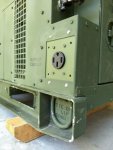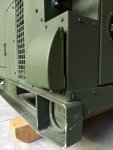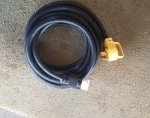Did you get that in use cover locally from Lowe's or something? I see how you made the mounting plate. Regardless, looks great!
Thanks, man. Here's the backstory for those who are interested...
I started out looking at HD's Reliance 50 amp weatherproof receptacle. My original plan was to attach it right over where the 803 power outlet sock was located. Once I got it home I didn't like how far it was sticking out. I fork the set from that side and wanted something that couldn't accidentally be knocked off.
Once I looked inside the enclosure I realized most of the depth was to accommodate the receptacle body and provide space for wires. Then I realized that HD sold the receptacle separately over on the next aisle and my plan began to form.
The first step was to remove the sock enclosure. I will share my secret for this. Get all the fasteners undone, then wait for your teenager to come by and then utter a lament about how "this thing is never gonna come out". Your teenager will see this as an opportunity to demonstrate superior problem solving and mechanical skills and demand that you "let me try". In less than 60 seconds: housing removed!
I used 1/4" aluminum plate to fill the housing opening. It has a nice solid feel to it, no flex at all when inserting and removing the plug. Once I got the receptacle mounted, wired, and inserted the plug in it, I went down to HD and browsed their selection of "in use, extra duty" covers.
The "in use" part means the cover is designed close with a plug inserted, the "extra duty" part means the cover is designed for use in wet locations. HD had quite a variety, even a couple I did not see online. The one I went with says "TayMac". It is metal and folds down for a slimmer profile when the plug is not inserted. The cover has notches in it that position the cover in both plug states, and there is a ring you can use to lock the cover closed with the plug inside. The cover required some modification. Had to carve some material out of the center to accommodate the receptacle, and a notch in the bottom lip for the plug. I think a number of the covers could work, just be prepared to do a little modification to make things work like you want.
I also modified the plug. It originally had a big handle coming off the back. I cut that off and sanded it down for a lower profile.
-- Carl



